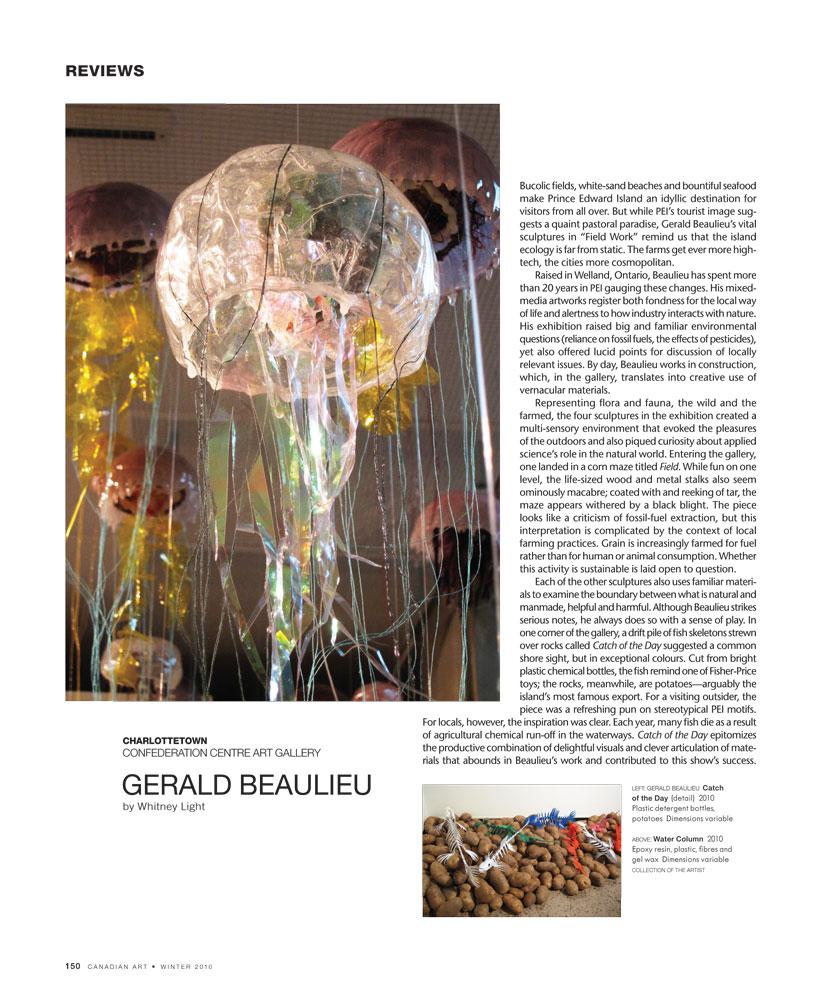Bucolic fields, white-sand beaches and bountiful seafood make Prince Edward Island an idyllic destination for visitors from all over. But while PEI’s tourist image suggests a quaint pastoral paradise, Gerald Beaulieu’s vital sculptures in “Field Work” remind us that the island ecology is far from static. The farms get ever more hightech, the cities more cosmopolitan.
Raised in Welland, Ontario, Beaulieu has spent more than 20 years in PEI gauging these changes. His mixedmedia artworks register both fondness for the local way of life and alertness to how industry interacts with nature. His exhibition raised big and familiar environmental questions (reliance on fossil fuels, the effects of pesticides), yet also offered lucid points for discussion of locally relevant issues. By day, Beaulieu works in construction, which, in the gallery, translates into creative use of vernacular materials.
Representing flora and fauna, the wild and the farmed, the four sculptures in the exhibition created a multi-sensory environment that evoked the pleasures of the outdoors and also piqued curiosity about applied science’s role in the natural world. Entering the gallery, one landed in a corn maze titled Field. While fun on one level, the life-sized wood and metal stalks also seem ominously macabre; coated with and reeking of tar, the maze appears withered by a black blight. The piece looks like a criticism of fossil-fuel extraction, but this interpretation is complicated by the context of local farming practices. Grain is increasingly farmed for fuel rather than for human or animal consumption. Whether this activity is sustainable is laid open to question.
Each of the other sculptures also uses familiar materials to examine the boundary between what is natural and manmade, helpful and harmful. Although Beaulieu strikes serious notes, he always does so with a sense of play. In one corner of the gallery, a drift pile of fish skeletons strewn over rocks called Catch of the Day suggested a common shore sight, but in exceptional colours. Cut from bright plastic chemical bottles, the fish remind one of Fisher-Price toys; the rocks, meanwhile, are potatoes—arguably the island’s most famous export. For a visiting outsider, the piece was a refreshing pun on stereotypical PEI motifs.
For locals, however, the inspiration was clear. Each year, many fish die as a result of agricultural chemical run-off in the waterways. Catch of the Day epitomizes the productive combination of delightful visuals and clever articulation of materials that abounds in Beaulieu’s work and contributed to this show’s success.
This is an article from the Winter 2010/11 issue of Canadian Art. To read more from this issue, please visit its table of contents.

 Spread from the Winter 2010/11 issue of Canadian Art
Spread from the Winter 2010/11 issue of Canadian Art







